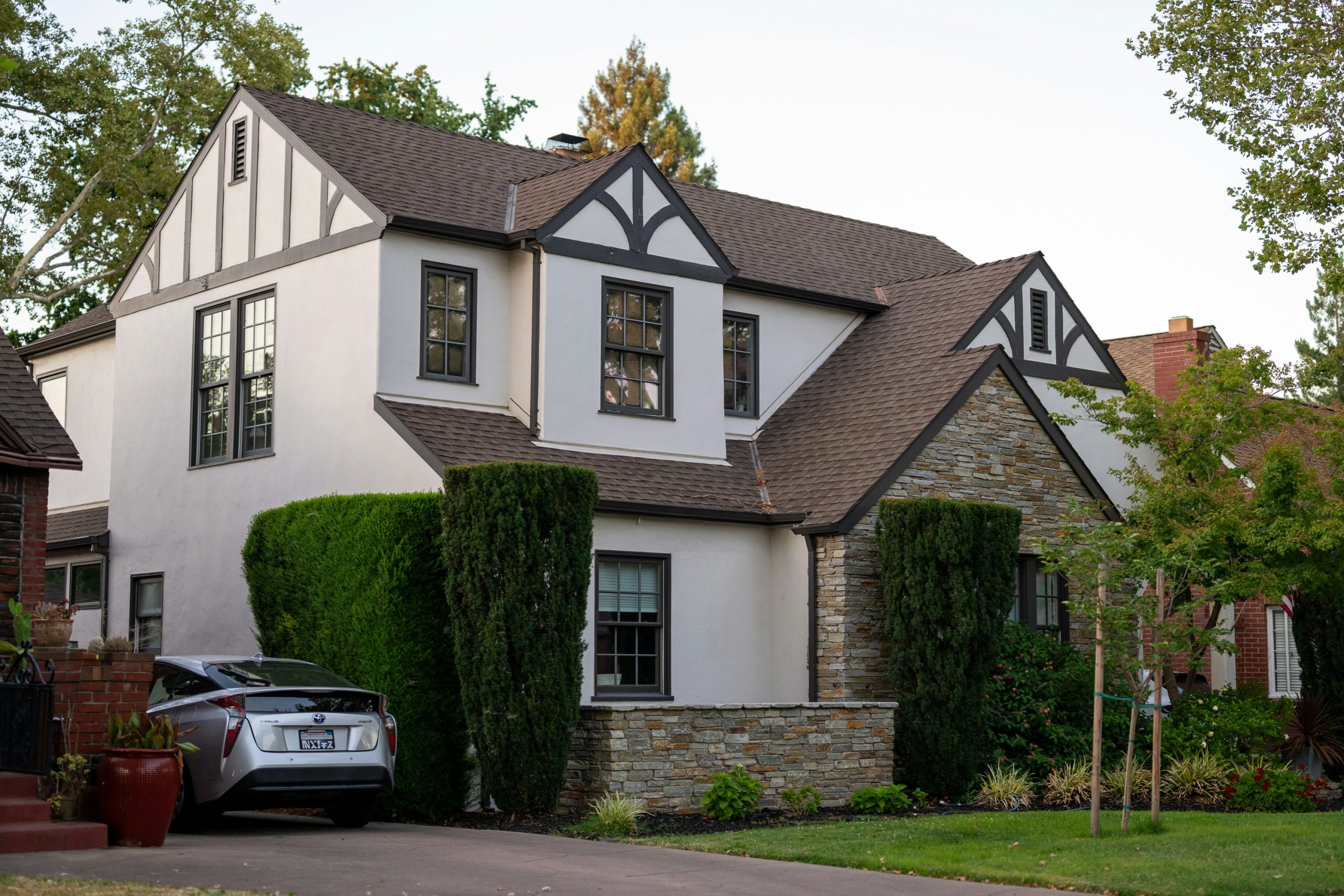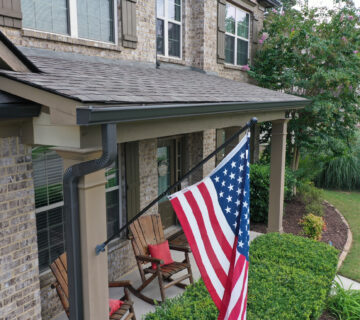What To Check After Having A New Roof Installed Key Roof Inspection Points
Ensuring the integrity of your recently installed roof is vital for long-term performance and durability. A comprehensive assessment should begin with a visual check to identify any glaring defects or debris that might compromise efficiency.
Proper installation of flashing is essential; it’s important to examine all locations closely, particularly where chimneys and vents are situated, to prevent potential leaks.
Assessing the condition of the roof shingles is necessary; look for signs of curling, buckling, or misalignment.
The rain gutter system must also be properly aligned, ensuring that downspouts effectively direct water away from the foundation. Confirm that all ventilation systems are properly installed and functioning to prevent future leaks after the roof replacement and installation.
Visual Inspection Of Your New Roof
Understanding your roof’s condition is crucial for ensuring its durability and performance over time. A detailed inspection enables homeowners to spot any visible flaws that might escalate into significant problems if left unaddressed.
Begin by carefully checking for any damaged shingles, as these are common issues that can affect overall roof performance.
The flashing, which serves as vital weatherproofing, should be examined to confirm it is properly sealed against the elements.
Assessing the quality of installation is equally important, particularly regarding how roof materials were placed. Evaluate the alignment and straightness of roof lines to ensure effective drainage. Document all findings for future reference, as it can assist in the evaluation of attic conditions, cost assessments, flashing durability, and the overall integrity of the roof during future inspections and installations.
Essential Areas To Inspect After Installation
The completion of a roofing project marks an important milestone, but the work is not yet finished. Homeowners must conduct a meticulous examination to identify any potential weak spots.
Critical zones such as edges, seams, and areas around penetrations require focused attention to prevent issues down the line.
These sections, when neglected, can lead to unwanted leaks or roof damage that may necessitate costly repairs.
Sealing edges effectively is crucial to thwart water pooling, a common cause of significant deterioration.
Homeowners should also scrutinize seams for any gaps or missing elements, as these can undermine the integrity of the structure. The roof’s connection to flash around vents and chimneys should be verified to prevent potential leaks that could cause roof damage and require costly repairs for the homeowner.
Roofing Inspections
- Regular inspections can prevent leaks and extend the lifespan of a roof.
- Neglected edges and seams can lead to significant water damage and costly repairs.
- Proper sealing of roof edges is essential to avoid water pooling, a major cause of deterioration.
- Ensuring the integrity of flash around vents and chimneys is crucial to maintaining a leak-free roof.
Signs Of Damage To Watch For
Being proactive in identifying issues can prevent significant expenses down the road. A common indicator of trouble involves visible leaks; water stains or puddles inside your home’s living areas could be a sign of a compromised roof.
During your inspection, check your attic and ceilings for any signs of dampness or discoloration.
A roof that’s missing or damaged shingles may raise red flags.
From ground level, look for missing pieces, or examine the surface for curled, cracked, or broken tiles.
Discoloration and streaking on the roofing material often signal underlying concerns that need urgent attention. Be on the lookout for issues with flashing and sealant, particularly around chimneys and vents, as these can also indicate the need for professional roof maintenance or a new roof installation.
Importance Of Flashing Around Roofs
Effective water management is crucial for maintaining the integrity of any structure, especially when it comes to roofing systems. An essential component in this regard is the installation of barriers that protect against moisture ingress, thereby safeguarding the roofing materials and the underlying structures.
By redirecting water flow, these barriers play a significant role in extending the lifespan of your roof.
Key locations for effective barrier installation include roof valleys, where water tends to accumulate, and around chimneys and vents that extend from the surface.
Proper installation at junctions between walls and roofs not only enhances the strength of the structure but also prevents potential leaks.
Techniques specific to areas such as skylight are critical for ensuring optimal performance. To maintain the health of your roof, regular inspections by a roofing professional, quality roof installation, and proper ventilation are essential for maximizing its lifespan.
Effective Water Management in Roofing
- Water barriers can significantly reduce moisture-related damage to roofing materials.
- Proper barrier installation at roof valleys and junctions can prevent leaks and extend roof lifespan.
- Regular inspections by roofing professionals can identify potential issues before they become costly repairs.
- Quality installation and ventilation are crucial for maintaining the structural integrity of roofing systems.
Checking Rain Gutters For Blockages
Maintaining the integrity of your home’s exterior relies heavily on proper water management. A failure to keep drainage systems clear can result in water pooling, which ultimately jeopardizes the roofing project.
Regular inspections can reveal signs of damage stemming from these obstructions, leading to costly repairs.
Debris such as leaves, twigs, and dirt tends to accumulate, creating risks for the entire structure.
Look out for signs of clogs, including overflowing water and visible debris obstructing the flow. To ensure your roof remains intact, make use of essential tools during cleaning, such as gloves and trowels, to facilitate effective maintenance. By implementing a consistent cleaning schedule, you can help keep your system functioning efficiently, thus avoiding the need for a roofing service or a new replacement project due to signs of damage.
Ensuring Proper Ventilation In Attics
Maintaining a healthy airflow in your home’s upper spaces is vital for safeguarding the longevity of your roofing materials. A lack of adequate circulation can lead to moisture retention, which poses a significant threat to the lifespan of your roof.
Excessive heat buildup contributes to accelerated material deterioration, potentially resulting in the need for a roof replacement much sooner than anticipated.
Begin by evaluating the current airflow conditions to identify essential steps for improvement.
Signs such as mold presence or roof sagging can indicate insufficient ventilation.
Employ tools to measure airflow and humidity levels, gathering vital information about your roof’s environment.
Incorporating both passive and active airflow systems can be beneficial. Passive options depend on natural maintenance steps to ensure the longevity and quality of your roof.
Professional Inspections For Peace Of Mind
Maintaining the integrity of your home is crucial, and regular assessments are a vital part of this process. Expert evaluations play a significant role in protecting your home from potential threats, including those posed by improperly installed materials or leftover debris that can accumulate over time.
By engaging skilled professionals, you gain access to their specialized knowledge and tools, enabling them to pinpoint issues that might otherwise go unnoticed.
It is advisable to schedule evaluations before and after getting a new roof, as well as seasonally throughout the year.
This consistent approach is a reliable way to ensure your roof remains in excellent condition and prolongs its lifespan. During each inspection, you can expect a comprehensive checklist that covers various aspects of your roofing needs, including how to protect your home, ensuring your roofing crew is ready for a roof installation, checking for improperly installed elements, and managing any leftover debris around your home, all of which are crucial for a successful insurance claim.
Roof Maintenance Tips For Longevity
Maintaining a durable shelter is essential for any homeowner. One of the best ways to ensure its longevity is through regular inspections of both the interior and exterior.
Homeowners should consistently check for signs of wear, such as missing shingles or accumulated debris and nails.
Seasonal checks are crucial; after storms, make sure the perimeter of your home is clear of potential hazards.
Hiring a professional for a yearly inspection can help identify issues early, preventing costly repairs that might arise due to poor maintenance practices. Cleaning gutters and downspouts effectively will also help avoid potentially lead to leaks and extend the overall life of your high-quality roofing, as one of the best ways to protect both the interior and exterior of your home is to have them inspected at least once a year and hire a professional to ensure the job is done right, removing all debris and nails from the perimeter of your home before the final steps.
| Inspection Frequency | Maintenance Importance |
|---|---|
| At least once a year | Prevents costly repairs |
| After storms | Identifies potential hazards |
| Professional yearly inspection | Ensures thorough checks |
| Clear debris and nails | Protects home structure |
Legacy Roofing & Exteriors: Your Trusted Roofing Partner
Ensuring your new roof’s longevity begins with a proper inspection to identify potential concerns, from flashing to roof repairs. At Legacy Roofing & Exteriors, we understand how vital it is for homeowners to feel confident in their roof’s integrity.
As a trusted roofing contractor, we specialize in delivering exceptional quality and service to keep your home protected. Whether it’s addressing a pesky roof drip, repairing leaks, or ensuring seamless installation, our experienced team of roofers is here to help.
Visit our About Us page to learn more about our commitment to quality or Contact Us today to schedule a consultation with your go-to roofing company.


